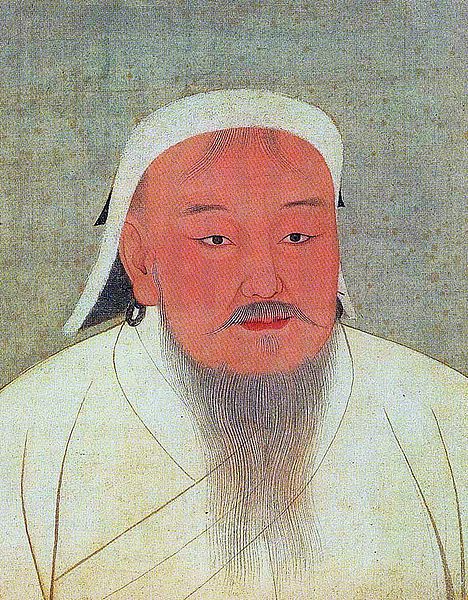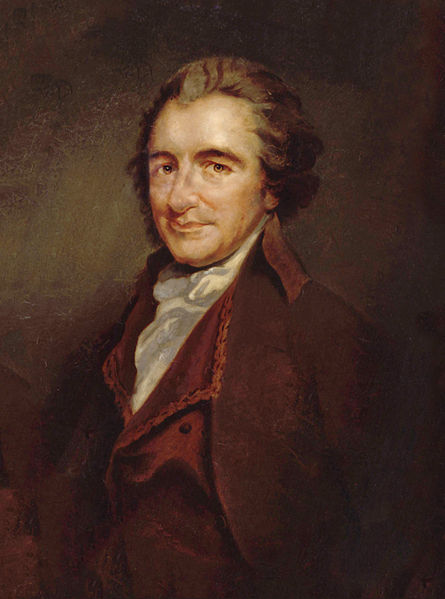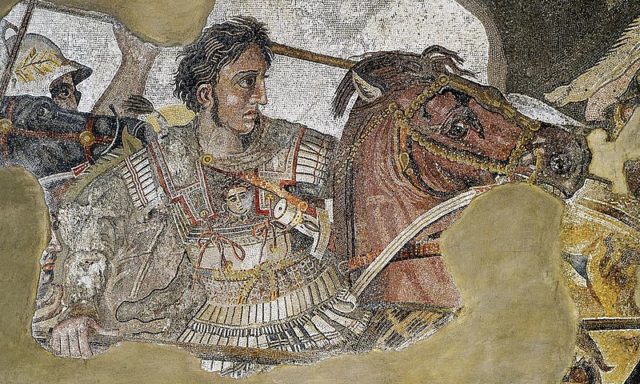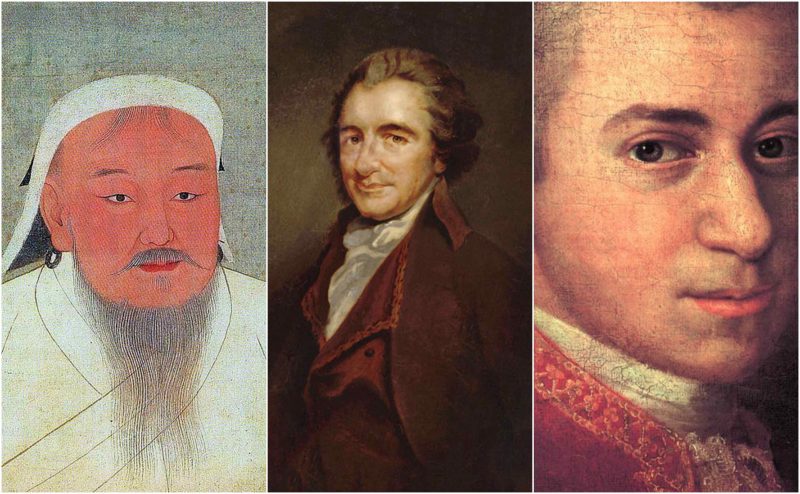Allegedly, everyone who dug Genghis Khan’s grave was killed, and then killers were themselves killed, so nobody knew exactly where the warlord was buried.
Also, according to the legend, Cleopatra committed the most painful suicide by self induced snakebite, while Thomas Paine’s bones are apparently antiques circulating among collectors.
However, the truth is that nobody knows what exactly happened to these people and what happened to their bodies after their deaths. Read the stories of 6 lost burial sites.
Genghis Khan

The mystery began on August 18, 1227, when Mongol leader Genghis Khan died of unknown causes while leading a military campaign in China. According to legend, Khan’s successors killed anyone who witnessed his funeral procession on its way back to the Mongol capital of Karakorum.
Some 800 soldiers are said to have massacred the 2,000 people who attended his funeral, before being summarily executed themselves.
Khan’s corpse was then placed in an unmarked grave to ensure his rest would be undisturbed. Horses trampled all evidence of the burial, and some say a river was diverted to flow over the site. As a result of these extreme measures, the location of Khan’s tomb has remained unknown.
Genghis Khan’s final resting place has since become one of the most sought after prizes in archaeology. Researchers suspect it may be located in Mongolia’s Khentii Province, but despite looking for it with everything from ground penetrating radar to satellite images, no team has yet to strike pay dirt.
Wolfgang Amadeus Mozart

When the wunderkind composer died from a mysterious illness in 1791, his body was placed in a wooden coffin and interred in an unmarked common grave in Vienna’s St. Marx cemetery.
There it lay for several years until the early 19th century, when, in accordance with the practices of the time, it was dug up and most likely dispersed or crushed to make room for new burials. Its location in the cemetery has since been lost.
A potential piece of Mozart’s body later resurfaced courtesy of a St. Marx gravedigger, who claimed he recovered the composer’s skull in 1801 after marking it with metal wire when it was first buried. The skull was given to Salzburg’s International Mozarteum Foundation in 1902, but DNA analyses have thus far been unable to prove whether it actually belonged to Mozart.
Cleopatra
Cleopatra and Antony famously took their own lives in 30 B.C., after Octavian’s forces pursued them to Alexandria. While Antony is said to have fatally stabbed himself in the stomach, Cleopatra’s method of suicide is less certain. Legend has it that she died by enticing an “asp” — most likely a viper or Egyptian cobra — to bite her arm.
However, the ancient chronicler Plutarch admits that “what really took place is known to no one.” He says Cleopatra was also known to conceal a deadly poison in one of her hair combs, and the historian Strabo notes that she may have applied a fatal “ointment.” With this in mind, many scholars now suspect she used a pin dipped in some form of potent toxin — snake venom or otherwise.
Thomas Paine

During the heady days of the 1770s, writer and pamphleteer Thomas Paine helped sound the call to arms for the American Revolution in such works as “Common Sense” and “The American Crisis.” Though once considered a hero, he was later denounced for attacking the church in his book “The Age of Reason,” and only a handful of people attended his burial when died in 1809.
The odyssey and mystery of his missing remains began some ten years later. The grave was dug up by a William Cobbett with the intention of taking the remains to England for reburial thus saving it from daily abuse and vandalism. One theory claims it was lost on its journey.
Another claims Cobbett kept the remains in an attic trunk and upon his death, his son began auctioning off the bones. People from around the world have come up with skeletal parts. A minister in England claims he has Paine’s skull and right hand, an English woman insists she has his jawbone. Others claim to have buttons constructed from the bones…
Attila the Hun

According to ancient records, Attila died by choking from a nosebleed, in his palace across the Danube after a feast celebrating his marriage to a beautiful young gothic princess named Ildico.
Legend says that as in the case of Genghis Khan, the ceremony was conducted in secret. His men diverted a section of a river, buried the coffin under the riverbed, and were then killed to keep the exact location a secret.
It would have been a fantastic finding if Attila the Hun really had been found. The discovery of his funerary site could bring many clarifications concerning the origins and identity of the Hunnic people and of Attila himself, which have both been sources of debate for centuries.
Alexander the Great

Alexander died in Babylon in 323 B.C., having led his Macedonian armies on a decade-long campaign of conquest from Greece to India. In keeping with his famously immodest moniker, the deceased warrior-king was placed in a gold sarcophagus and coffin and eventually taken to a tomb in Alexandria.
His body was moved to a mausoleum a few years later, where it became something of an ancient tourist attraction.
Julius Caesar and Augustus both paid their respects, and Caligula supposedly looted Alexander’s armored breastplate during a visit in the 1st century A.D. The Roman Emperor Septimus Severus finally had the tomb sealed off for good sometime around the year 199.
The trail goes cold from there, and some 150 search expeditions have failed to pick it up. Most researchers believe Alexander’s grave is still lurking somewhere in Alexandria, but others argue that it may have been moved to Venice, Greece or some other location in Egypt.
